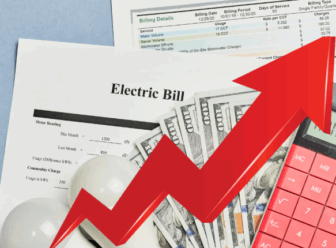I have an op-ed column out today that attacks the threat of a nuclear power plant in Maryland by looking at recent fruitless attempts to build plants, and the cost born by ratepayers.
Nuclear energy: Don’t believe the sticker price
By Matt Dernoga
A common perception of nuclear power is that it’s an affordable, carbon-free energy source that could meet a lot of America’s demand for electricity, if only those darn environmentalists would get out of the way. Unfortunately for nuclear power advocates and Maryland ratepayers, this statement crumbles upon contact with reality.
The average cost of electricity for all of Maryland’s sectors is 13.45 cents per kilowatt-hour. There’s a growing possibility some of us will have the pleasure of paying double that thanks to the pending merger between Constellation Energy and French electric giant EDF Energy, which is supposed to pave the way for construction of a new nuclear power plant at Calvert Cliffs. Doubling rates is fairly easy to predict with a trip down memory lane.
Ontario was slated to build a new nuclear plant until this summer, when a 2007 estimated price tag of $7 billion turned into $26 billion, which would’ve wiped out their 20-year budget. Turkey became a “turkey” when the only bidder for their new nuclear power plant offered a price for ratepayers of 21.16 cents a kilowatt-hour. Turkey’s wholesale energy prices average 7.9 cents a kilowatt-hour. The new bid for France’s plant also soared past expectations, settling at a cool $23.6 billion. Finland’s new nuclear power plant has seen four years of delay and cost overruns from 3 billion euros up 50 percent to 4.5 billion euros. That nicely works out to $6.74 billion in U.S. dollars and climbing.
It’s happening here too. Progress Energy revealed in 2008 to Florida that its tab for twin nuclear reactors would actually be $17 billion dollars, tripling the estimates the utility offered the year prior. This was before they delayed construction by 20 months and got the Florida Public Service Commission to hike ratepayers’ electric bills by 25 percent to cover the costs. This was also before San Antonio discovered in October their two newly proposed nuclear reactors would cost as much as $17 billion instead of $13 billion, causing at least a delay, likely to be followed by a rate increase to cover costs.
And all this was before the Maryland Public Service Commission approved the Constellation and EDF deal so we could have a new $9 billion (initial cost estimate) Calvert Cliffs reactor. It’s hard to hide from history when it lives so close.
In case you were wondering, ratepayers tend to foot the bulk of the cost overruns and delays you get with a new generation nuclear power plant, even if it never gets built. If it’s any consolation, Gov. Martin O’Malley got $100 checks sent to all BGE customers as part of the merger.
The reason we get all of these delays and cost overruns is because the nuclear power industry fudges the numbers to justify new plant construction. One of the most detailed and transparent studies by a certified public accountant named Craig Severance found that electricity from new nuclear reactors will cost in the range of 25 to 30 cents a kilowatt-hour, largely thanks to the construction delays and cost overruns that I illustrated above.
If I were a state ratepayer, I would hold on really tight to that $100 check that’s supposed to buy my vote in 2010. You’re gonna need it unless someone in Annapolis finds their common sense.
Matt Dernoga is a senior government and politics major. He can be reached at dernoga at umdbk dot com
Cross-posted from The Dernogalizer





